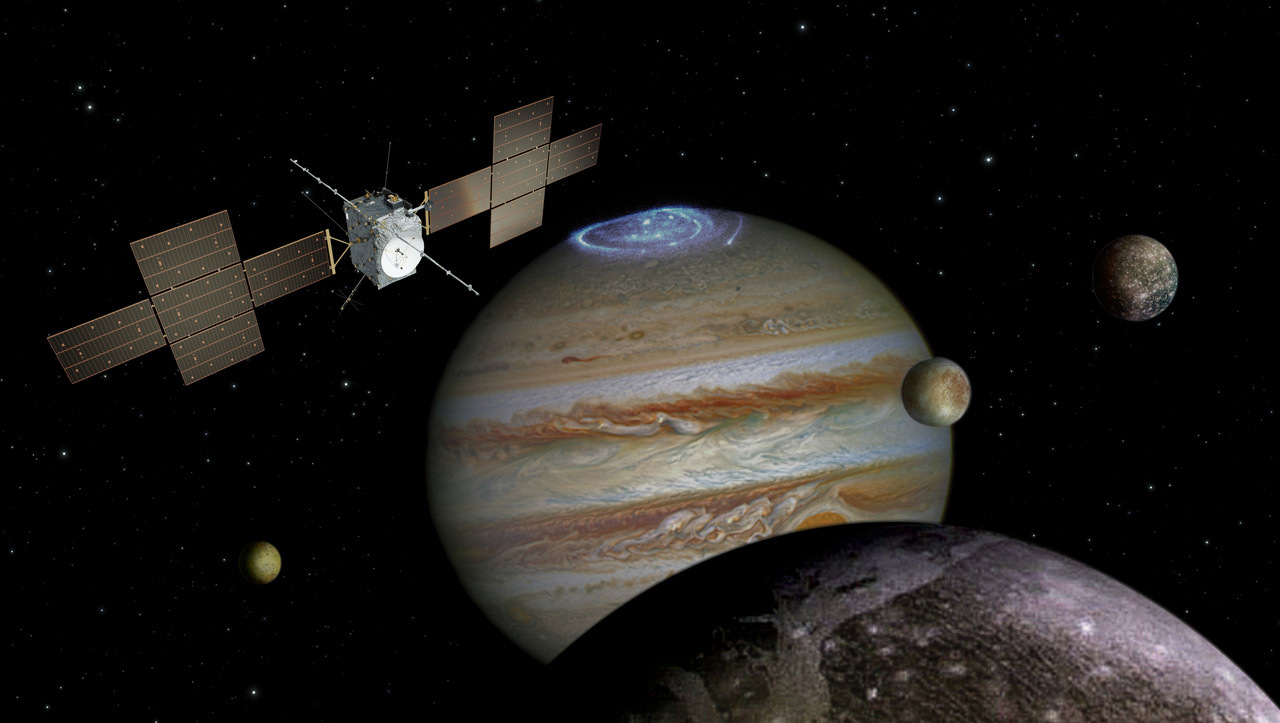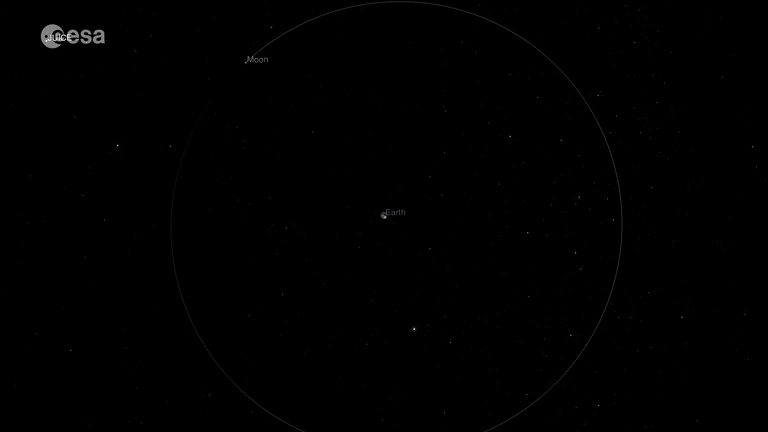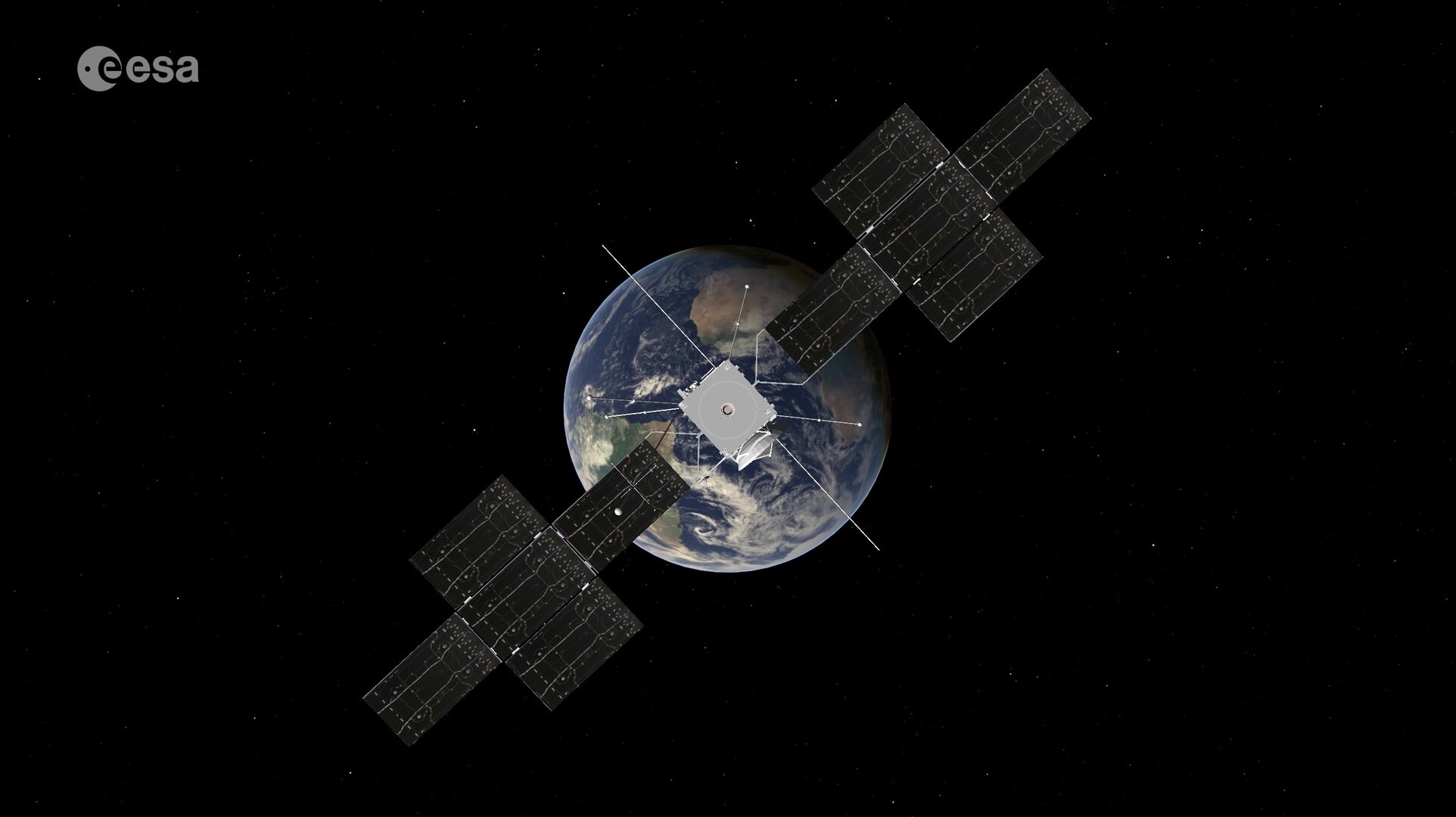Europe's JUICE probe will be 1st to use gravity of Earth and moon to slingshot to Jupiter
A 43-minute burn set the stage for JUICE's upcoming 'double gravity assist' to propel it towards Jupiter.

The European Space Agency's Jupiter Icy Moons Explorer (JUICE) is heading back to Earth — for the time being, anyway.
On Nov. 17, JUICE performed a 43-minute burn to get into position for its upcoming Earth-moon flyby, the first-ever double gravity assist of the two celestial bodies. It was the spacecraft's largest maneuver so far. "This maneuver used up roughly 363 kilograms [800 pounds] of fuel – or almost exactly 10% of the 3,650 kilograms [8,047 pounds] of fuel that JUICE launched with," Julia Schwartz, Flight Dynamics Engineer at ESA’s ESOC mission control center in Germany, said in a statement.
The spacecraft launched from French Guiana on April 23, 2023, and is ultimately bound for Jupiter to study the planet and three of its icy, potentially oceanic, moons: Ganymede, Callisto, and Europa. But in order to get there, it needs to perform a series of gravity assists, flying past the planets of the inner solar system and using their gravitational tides to slingshot itself toward its target — a technique that saves overall fuel.
This burn is one of two necessary to put JUICE on the right trajectory for the Earth-moon gravity assist, the first in the series of assists, which will occur in Aug. 2024. "This first burn did 95% of the work, changing JUICE’s velocity by almost 200 meters per second [656 feet per second]," said Schwartz. "JUICE is one of the heaviest interplanetary spacecraft ever launched, with a total mass of around 6,000 kilograms [13,228 pounds], so it took a lot of force and a lot of fuel to achieve this."
Related: Relive the launch of Europe's JUICE mission to Jupiter in these stunning photos

In the coming weeks, ESA will analyze JUICE's new orbit before calibrating a second burn to fine-tune the probe's trajectory for the double gravity assist. "If all goes well with both parts of this maneuver, we likely won’t need to use the main engine again until we enter orbit around Jupiter in 2031," Ignacio Tanco, JUICE Spacecraft Operations Manager, said in a statement. "For small trajectory corrections between now and then, we will use JUICE’s smaller thrusters."
This first burn was a particularly challenging one, as parts of it couldn't be tested in advance. "For example, we only had an estimate for how the liquid in the fuel tanks will move around as the spacecraft accelerates," said Tanco. "This is very important to know precisely, because if the fuel behaves different to how we expect, it could cause the spacecraft to drift off course during the burn. So, we are monitoring closely."
Get the Space.com Newsletter
Breaking space news, the latest updates on rocket launches, skywatching events and more!

The team will use data from this burn to help inform future burns for the probe's Jupiter insertion, when JUICE will need to slow down by approximately one kilometer per second (0.62 miles per second) to enter Jovian orbit at last.
For now, it's a waiting game to see if JUICE is headed back our way.
Join our Space Forums to keep talking space on the latest missions, night sky and more! And if you have a news tip, correction or comment, let us know at: community@space.com.

Space.com contributing writer Stefanie Waldek is a self-taught space nerd and aviation geek who is passionate about all things spaceflight and astronomy. With a background in travel and design journalism, as well as a Bachelor of Arts degree from New York University, she specializes in the budding space tourism industry and Earth-based astrotourism. In her free time, you can find her watching rocket launches or looking up at the stars, wondering what is out there. Learn more about her work at www.stefaniewaldek.com.









